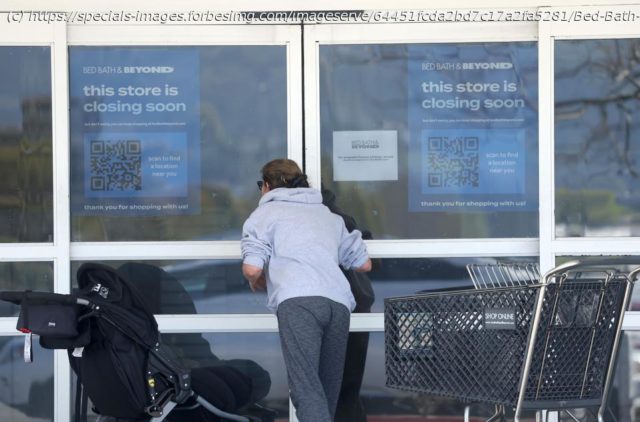Don’t blindly copy a rival’s turnaround strategy
BBBY will keep some stores operating in the near term. According to a company statement, these include “360 Bed Bath & Beyond and 120 buybuy BABY stores and websites…as the company begins its efforts to effectuate the closure of its retail locations.”
Since peaking at around $80 a share in January 2014, BBBY stock has lost almost all of its value — trading in the after-market at 28 cents a share on April 23.BBBY’s Last Gasp
BBBY has been on its death bed ever since BBBY board member, Sue Gove, took over in October 2022 as CEO after Mark Tritton — a former Target executive brought in to revive the retailer — departed last June.
The 2022 holiday season marked BBBY’s last stand. Its death motion included borrowing $375 million loan to get through the holidays; delaying its bankruptcy in February with “an unusual $1 billion financing deal with a hedge fund,” scrapping that deal in April and failing to raise $300 million from investors, “and closing hundreds of stores,” the Journal reported.
To be sure, the rise of Amazon — where customers can buy all the same merchandise at a lower price — did not immediately drive BBBY out of business. As the Times reported, BBBY’s stores “full of towels and kitchen aids — all available at a reduced price with that big blue coupon,” kept shoppers coming back after the 2008 financial crisis while rivals such as Sharper Image and Linens ‘n Things went bankrupt.
For decades after its founding, BBBY provided consumers with a very compelling value proposition. Its founders used their limited capital to buy merchandise — which they piled to the ceiling — rather than spending on fancy stores and later the technology and processes needed for e-commerce. Store managers stocked what local shoppers wanted. And BBBY offered 20%-off coupons in lieu of spending on newspaper circulars, noted the Journal.Why BBBY Went Bankrupt
Legendary retailers fail in a predictable way. Their founders preside over rapid growth and market leadership. After the founders step back, aggressive rivals go after their customers and they lose market share.
They hire so-called professional CEOs from well-regarded rivals who bull-headedly apply what worked at their previous employer while skipping the crucially important step of listening to customers and giving them more of what they need than competitors do. That final failure sends the once-proud retailing icon into bankruptcy.
This brings to mind the 2008 bankruptcy of electronics retailer Circuit City.






